Robo
Original price was: $2.00.$1.00Current price is: $1.00.
Enthiran (transl. Robot) is a 2010 Indian Tamil-language science fiction action film co-written and directed by S. Shankar.[13] It is the first installment in the Enthiran film series. The film stars Rajinikanth, who plays a dual role as a scientist and the robot alongside Aishwarya Rai Bachchan in the lead roles with Danny Denzongpa, Santhanam and Karunas in supporting roles. The soundtrack album and background score were composed by A. R. Rahman while the dialogues, cinematography, editing and art direction were handled by Madhan Karky, R. Rathnavelu, Anthony and Sabu Cyril respectively. The story revolves around the struggle of a scientist named Vaseegaran to control his sophisticated android robot named Chitti, after Chitti’s software is upgraded to give it the ability to comprehend and exhibit human emotions. The project backfires when Chitti falls in love with Vaseegaran’s girlfriend Sana, and is manipulated by Vaseegaran’s mentor Bohra into becoming homicidal.
After being stalled in the development phase for nearly a decade, the film’s principal photography began in 2008 and lasted two years. The film marked the debut of Legacy Effects studio (which was responsible for the film’s prosthetic make-up and animatronics) in Indian cinema. Enthiran was released worldwide on 1 October 2010. Produced by Kalanithi Maran, it was India’s most expensive film up to that point.
The film received generally positive reviews upon release. Critics were particularly appreciative of Shankar’s direction, storyline, Rajinikanth’s performance as Chitti, music, action sequences, production values and the visual effects by V. Srinivas Mohan. Enthiran emerged as the highest-grossing Indian film of 2010. It won two National Film Awards, three Filmfare Awards, seven Vijay Awards and two Screen Awards. Enthiran was followed by a standalone sequel, 2.0, which released in late 2018.
Plot[edit]
After a decade of research, the scientist Dr. Vaseegaran creates a sophisticated android robot with the help of his assistants, Siva and Ravi, in order to commission it into the Indian Army. He introduces the robot, named Chitti, at a robotics conference in Chennai. Chitti helps Sana, Vaseegaran’s medical student girlfriend, cheat on her examination, then saves her from being assaulted by a group of thugs. Vaseegaran’s teacher, Professor Bohra, is secretly engaged in a project to create similar android robots for a terrorist organisation, but so far has been unsuccessful. The dealers of the organisation give Bohra an advanced payment, but threaten to murder him if he fails to complete the project within the deadline. This prompts Bohra seek the details of Chitti’s neural schema, intending to program his robots correctly.
Vaseegaran prepares Chitti for an evaluation by the Artificial Intelligence Research and Development (AIRD) Institute, which is headed by Bohra. During the evaluation, Chitti attempts to stab Vaseegaran at Bohra’s command, which convinces the evaluation committee that the robot is a liability and cannot be used for military purposes. Later, Vaseegaran deploys Chitti to save people from a burning building in an effort to prove Bohra wrong, but fails when Chitti saves a girl named Selvi who was bathing but was ashamed being naked filmed on camera and flees, only to be hit and killed by a truck. Vaseegaran asks for one month to modify Chitti’s neural schema to enable it to understand human behaviour and emotions, to which Bohra agrees. While nearing the deadline, Chitti becomes angry with Vaseegaran, demonstrating to him that it can manifest emotions.
Chitti uses Sana’s textbooks to successfully help Sana’s sister Latha give birth to a child. Bohra congratulates Vaseegaran on the achievement and belatedly lets the robot pass the AIRD evaluation. Chitti develops romantic feelings for Sana after she congratulates Chitti by kissing it. Later, at Sana’s birthday party, Chitti attempts to kiss her while dancing and is confronted by Vaseegaran and Sana, to whom it confesses its love towards her. They try to make Chitti understand that it is a machine and its love for Sana is against nature and how it is established, Sana explains to Chitti that they can only be friends. Saddened by her rejection, yet still in love with her, Chitti deliberately fails an evaluation conducted by the Indian Army, resulting in Vaseegaran chopping Chitti into pieces, which Siva and Ravi dump into a landfill site.
Bohra visits the site to retrieve Chitti, which has now reassembled itself, albeit in a damaged state. Bohra embeds a red chip inside Chitti while reconstructing it along with Siva and Ravi, converting it into a ruthless killer. When Siva and Ravi ask Bohra why he is doing this to Chitti, Bohra tells them he is using Chitti to earn money through his business and defame Vaseegaran, scaring Siva and Ravi. Chitti gatecrashes Vaseegaran and Sana’s wedding, kidnaps Sana, creates replicas of itself and kills Bohra. Using its robot army, Chitti occupies AIRD and causes mayhem in the city. After informing Sana that it has acquired the human ability to reproduce, Chitti wishes to marry her so that a machine and a human being can give birth to a preprogrammed child, but Sana refuses. It eventually finds Vaseegaran, who entered AIRD to stop it, and nearly kills him before the police appear. The ensuing battle between Chitti’s robot army and the police personnel leads to many casualties and much property destruction. Vaseegaran eventually captures Chitti using a magnetic wall and accesses its internal control panel, whereby he instructs all the other robots to self-destruct. He removes Chitti’s red chip, calming it.
In a court hearing, Vaseegaran is sentenced to death for the casualties and damages caused by the robot army, but Chitti explains that it was Bohra who caused its deviant behaviour and shows the court video footage of Bohra installing the red chip. The court drops all charges on Vaseegaran, but orders Chitti to be dismantled. Left with no choice, Vaseegaran asks Chitti to dismantle itself. While saying goodbye, Chitti apologises to Vaseegaran and Sana before dismantling itself.
Several years later, in 2030, Chitti is a museum exhibit. A curious school student on excursion asks her guide why it was dismantled, to which Chitti responds, “Naan sinthikka arambichen” (I started thinking).
Cast[edit]
I thought that playing Chitti the robot would be very difficult. He is a machine. His movements should not be like a human being’s. We had to draw a line. If I deviated even slightly, Shankar would point it out and say I was being too human. After four to five days of shooting, we found a rhythm.
— Rajinikanth, on his experience of playing Chitti.[14]
- Rajinikanth as K. Vaseegaran and Chitti[15]
- Aishwarya Rai Bachchan as Sana[16]
- Danny Denzongpa as Professor Bohra[16]
- Santhanam as Siva[16]
- Karunas as Ravi[16]
- Cochin Haneefa as the traffic police officer[16]
- Kalabhavan Mani as Pachaimuthu[16]
- Delhi Kumar as Vaseegaran’s father[16]
- Raaghav as the neighbourhood bully[15]
- Devadarshini as Latha[16]
- Revathi Sankaran as Vaseegaran’s mother[15]
- Sabu Cyril as Shah[17]
- Sai Dheena as a thug
- Sugunthan as the police inspector[18]
- Shriya Sharma as the curious student[18]
- Chaams as one of the barbers working at The Park Hotel[18]
- Devadas Kanakala as K. Bhajanlal, a customer at The Park Hotel[18]
Production[edit]
Development[edit]
In 1996, following the release of Indian, S. Shankar approached and pitched three storylines to Rajinikanth to consider for his next venture. This included scripts which would later become Sivaji: The Boss (2007), Enthiran (2010) and I (2015). Rajinikanth was sceptical and refused all three scripts at the time.[19] Following the completion of his first directorial venture in Hindi, Nayak (2001), Shankar announced his next project, Robot, which was to feature Kamal Haasan and Preity Zinta.[20][21] The film was to be produced by the now-defunct company Media Dreams, a division of Pentamedia Graphics.[21][22] The film was reported to be a futuristic techno-thriller set in Chennai in around 2200 or 3000.[23][24] Despite the completion of a photoshoot featuring Haasan and Zinta,[25] the project was shelved as a result of scheduling conflicts with Haasan.[26] Shankar consequently started work on Boys (2003).[21]
After Boys, Shankar began work on his next feature starring Vikram, which was initially reported by Rediff.com to be Robot revived,[27] but was later revealed as Anniyan (2005).[28][29] One month post the release of Sivaji: The Boss in June 2007, he approached Shah Rukh Khan for the lead in Robot.[30] Shankar had cast Priyanka Chopra in the lead opposite him.[31] Khan was about to produce it under his own banner, Red Chillies Entertainment, but in October the same year the project was officially aborted due to creative differences between him and Shankar.[30][32]
The project was revived in January 2008 with Eros International and the London-based production company Ayngaran International willing to produce the film.[22] The state government of Tamil Nadu granted tax exemptions for films titled in Tamil, resulting in the new production being renamed Enthiran.[26] While Sujatha was originally assigned to write the dialogue for the film, Madhan Karky took over after Sujatha’s death in February 2008.[25] In December 2008, Eros International withdrew from funding the project after financial difficulties caused by the box-office failure of Drona (2008) and Yuvvraaj (2008),[33] with the subsequent departure of Ayngaran International, which struggled with the financial crisis of 2007–2008.[34] The film’s production and release rights were sold to Sun Pictures.[35]
Cast and crew[edit]
In January 2008, Rajinikanth accepted the lead role in the film for a salary of ₹450 million (Indian rupees).[32][36][Note 2][14] Shankar rewrote the original script to suit Rajinikanth’s acting style.[14] Although Aishwarya Rai Bachchan was Shankar’s original choice for the female lead in 2001, she declined it owing to a busy schedule and was replaced by Zinta.[38] When Shankar revived the project with Rajinikanth,[32] contenders for the part included Deepika Padukone,[39] Shriya Saran and Rai, who was ultimately selected and paid ₹60 million.[40][41][Note 2] Rai’s voice was dubbed by Savitha Reddy.[42][Note 3]
Several actors were considered for the role of Professor Bohra, including Amitabh Bachchan, J. D. Chakravarthy,[43] Sathyaraj and British actor Ben Kingsley,[44][45] but it was Danny Denzongpa who eventually received it, making Enthiran his first film in Tamil.[46] Dubbing for Denzongpa was provided by Kadhir.[47] Comedians Santhanam and Karunas were cast to portray Vaseegaran’s assistants Siva and Ravi respectively.[48]
The soundtrack album and background score were composed by A. R. Rahman.[49] Vairamuthu, Pa. Vijay and Madhan Karky authored the lyrics for the songs.[49][50] Manoj Bharathiraja, son of filmmaker Bharathiraja, was signed on to be an assistant director after he approached Shankar.[45] Also working as assistant directors were Atlee,[51] Shree and Karthik G. Krish.[52][53] Sabu Cyril, in addition to being the film’s art director, made a guest appearance as Shah, an interpreter between Bohra and the terrorist organisation.[17][54]
R. Rathnavelu was hired as the cinematographer after Ravi K. Chandran,[55] Nirav Shah and Tirru were considered.[56][57] Anthony was the film’s editor.[58] Yuen Woo-ping, known for his work in The Matrix trilogy and the Kill Bill films, was selected to be the stunt co-ordinator, while Legacy Effects, a visual effects studio based in the United States, were in charge of the prosthetic make-up and animatronics in the film.[59] Munich-based film technical company, Panther, were responsible for the crane shots.[60][Note 4] The film’s subtitle captioning was done by Rekha Haricharan.[61]
Costume design[edit]
Manish Malhotra and Mary E. Vogt were chosen to design the film’s costumes.[62][Note 5] Fifty-seven costumes were used for Rai, including a “Mexican tribal” look that she sported during the filming of the “Kilimanjaro” segment.[63] According to make-up artist Banu, no prosthetics were used for Rajinikanth to avoid bothering him by withholding his time on set.[64] Additional make-up was by Vance Hartwell, an employee of Legacy Effects.[65]
The visual appearance of Chitti was based on the G.I. Joe action figures. For Chitti’s “villain robot” look, its hair was spiked and brown coloured lenses were used for its eyes, whereas for its “good robot” look, green coloured lenses were used.[64] The wig used for Chitti’s “villain robot” look had a silver streak in the middle, made out of Yak hair,[66] while its leather jacket was designed by Vogt.[66] To make Vaseegaran look mature, the team made Rajinikanth sport an Oakley beard.[Note 6] Suits made of copper were used for Chitti’s costumes.[68]
Principal photography[edit]
For Sabu Cyril’s sets, Shankar required approximately twice as much studio floor space as for his previous film. After rejecting Ramoji Film City for technical reasons, Enthiran‘s producer, Kalanithi Maran, took six months to set up three air-conditioned studio floors on land in Perungudi owned by Sun TV Network.[69] Filming began on 15 February 2008 at AVM Studios in Chennai.[57] After the initial stages of filming, Shankar and Rathnavelu toured the world for three weeks, scouting for exotic filming locations.[70] They visited Austria, Germany, Peru, Brazil and Argentina, looking for a backdrop to shoot the “Kilimanjaro” and “Kadhal Anukkal” segments,[71] eventually deciding on Peru and Brazil.[72][73] “Kilimanjaro” was filmed at the ruins of the Incan city of Machu Picchu in Peru, with some 100 Brazilian extras.[71][72] It was choreographed by Raju Sundaram and supervised by Fernando Astete, director of the Machu Picchu archaeological park.[72][74] “Kadhal Anukkal” was filmed in Lençóis Maranhenses National Park in northeastern Brazil.[73]
The filming for Chitti’s introduction to the international robotics conference was completed in December 2008 at Sri Sivasubramaniya Nadar College of Engineering and Vellore Institute of Technology, where more than 400 students were used as extras.[75][76] Further footage was shot over five days at the Ennore Port on the Mitsui O.S.K. Lines car carrier, Neptune Ace.[77] An action sequence where Chitti saves Sana from thugs was filmed in Lonavla, under the supervision of the action choreographer Peter Hein.[78] Scenes featuring Rajinikanth as Chitti were captured over five days at the Perungudi Dump Yard in Chennai.[79] Sabu Cyril told Uma Kannan of The New Indian Express that the sets for the climax sequence, which was filmed at Mayajaal, consisted of a tar road and glass buildings which rose to 65 feet (20 m), and that aluminium composite panels, reported to have cost ₹50 million, were also used to design the sets.[80][81][Note 7]
The set for “Arima Arima“, a sequence choreographed by Prabhu Deva,[82] was designed and constructed by Cyril at Ramoji Film City in Hyderabad.[80] Filming of the number took place over 22 days in April 2009.[82] Junior artists were employed by Rathnavelu to wear masks of Rajinikanth.[83] For the sequence entitled “Irumbile Oru Irudhaiyam”, choreographed by Remo D’Souza and featuring Rai and Rajinikanth as Chitti,[84] three different sets were used: one of copper, one of gold and one in silver.[80] The musical number, which was filmed in AVM Studios for eight days, was the last portion of the film’s principal photography. D’Souza incorporated the popping style of street dances, but encountered difficulties in performing the dance movements in tandem with the robot, and with the restrictions created by the rigid costumes.[84] Principal photography ended on 7 July 2010.[85]
Visual effects[edit]
Impressed with the film’s script, V. Srinivas Mohan became the visual effects supervisor in December 2007. He asked Shankar to increase the filming schedules by six months to include pre-production requirements.[86][87] Both Mohan and Shankar visited several visual effects companies, including the New Zealand-based Weta Digital and the United States-based Industrial Light & Magic, Cafe FX and Tippett Studio before partnering with Legacy Effects.[86][88] The original Eros-Ayngaran visual effects budget was ₹700 million,[Note 2] but after Sun Pictures took over production, it was significantly reduced to ₹200 million.[Note 2] As a result, the visual effects team had to omit and alter some sequences, making Chitti wear sunglasses for most of the film to reduce the cost and difficulty of animating his eyes.[89]
After a series of previsualisation tests, including a scene in which Chitti jumps on a train to save Sana, Mohan eventually decided to use the technique in 40 out of the 60 visual effects scenes featured in the film,[86] consisting of 2,000 takes.[90] Further previsualisation supervision was conducted by P. C. Sanath of Firefly Creative Studios, a visual effects company based in Hyderabad. 3D storyboards were constructed using 3D animation programs for every scene in the film and were shot from different angles.[87] In an interview with Malathi Rangarajan of The Hindu, Mohan said all the pre-production work took one-and-a-half years to complete.[90]
Rathnavelu used the 435 Xtreme camera and also wrote a 1,600-page manual, in which he listed all the possible angles from where he could film the characters Rajinikanth played.[91][92] Legacy Effects and the Hong Kong-based visual effects companies Kinomotive Studios and Menfond Electronics took responsibility for the film’s CGI work.[90] To create the robots with Rajinikanth’s appearance, a complete scan of his face in 3D digital format in all possible lighting conditions was conducted using the Doom Light Stage,[Note 8] so that his face could be replicated on the mannequins.[87] The technique, according to Shankar, was previously used in The Curious Case of Benjamin Button (2008).[94] The robot Chitti featured in the film was a mannequin made by a Legacy Effects team of 100 technicians in Los Angeles. For every robotic mannequin used, six puppeteers were employed to control the mannequin’s movements.[90]
Themes and influences[edit]
Enthiran focuses on the battle between man and machine.[95] Despite Shankar’s claim that Enthiran was a purely original idea,[25] it has been compared to Mary Shelley‘s 1818 novel Frankenstein, owing to the similar personae of Chitti and Frankenstein’s monster, both of whom turn against their respective creators.[96][97] K. Moti Gokulsing and Wimal Dissanayake, in their book Routledge Handbook of Indian Cinemas, noted the similarity between the two works, arguing that Chitti was “manipulated by Bohra to become a Frankenstein-like figure”.[98] Writing for The A.V. Club, Genevieve Koski observed, “The plot of Enthiran is essentially Frankenstein via [Isaac] Asimov‘s Three Laws of Robotics.”[13]
Director and film critic Sudhish Kamath called Enthiran “a superhero film, a sci-fi adventure, a triangular love story with a hint of the Ramayana“, while remarking that Enthiran‘s similarities to The Terminator (1984) were “more than obvious. Not just visually—where we see the Superstar with one human eye and one scarred metallic eye but also intentionally spelt out when the bad robot announces that he has created Terminators.” Kamath compared two of the film’s robots to C-3PO and R2-D2, droids from the Star Wars film series, which was referenced in Enthiran when Vaseegaran refers to one of his creations as “R2”.[99] The film was noted to have similarities with the 2002 Kannada film Hollywood which had its lead actor playing three roles – one of which was a scientist and another was a humanoid robot invented by that scientist which falls in love with the girlfriend of his creator.[100]
Although Shankar initially claimed that Enthiran would be made for all audiences, including those lacking computer literacy,[101] the film is influenced by and makes references to many scientific principles relating to the fields of engineering, computer science and robotics, including terabytes and Asimov’s laws of robotics.[102] Visual references are made to the science books A Briefer History of Time (2005) and Freakonomics (2005).[36] In his book Visual Perception and Cultural Memory: Typecast and Typecast(e)ing in Malayalam Cinema, Sujith Kumar Parayil notes the similarities between Kalabhavan Mani’s role in the film to the one Mani played in the Malayalam film Sallapam (1996).[103]
Music[edit]
For Enthiran‘s soundtrack and score, A. R. Rahman made use of the Continuum Fingerboard, an instrument he had experimented with previously in the song “Rehna Tu” from Rakeysh Omprakash Mehra‘s drama film Delhi-6 (2009).[104] The film also marked the debut of Rahman’s daughter Khatija as a playback singer.[105]
The soundtrack album to Enthiran was released on 31 July 2010 at the Putrajaya International Convention Centre in Kuala Lumpur, Malaysia.[106] The original Tamil and dubbed Telugu versions were released by Think Music, while the dubbed Hindi version was released by Venus Music.[107] Think Music purchased the release rights of the original Tamil and dubbed Telugu versions of the album for ₹70 million.[108][Note 7] The album of the film’s dubbed Telugu version, Robo, was released on 6 August 2010, while its dubbed Hindi version, Robot, was released on 14 August 2010.[109][110] After the second day of release, the album’s original Tamil version reached the number one position in the Top 10 World Albums chart on iTunes, making it the first Tamil album to do so.[111][112]
The Tamil album was officially released on 31 July 2010, which coincided with a promotional event held at the Putrajaya International Convention Centre in Kuala Lumpur, Malaysia.[113] Co-hosted by Vivek and Punnagai Poo Gheetha, the event was attended by most of the film’s cast and crew members. Other invited guests were Dayanidhi Maran, Radha Ravi, Vadivelu,

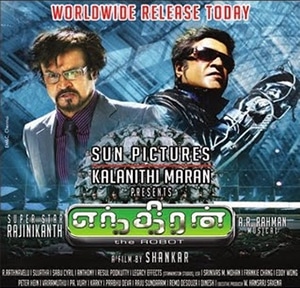

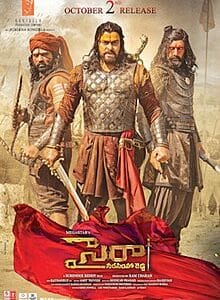
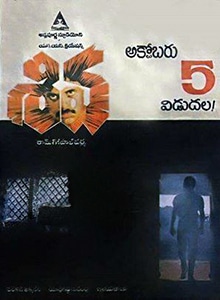
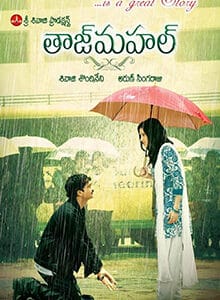
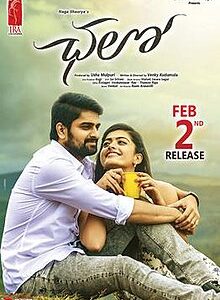

Reviews
There are no reviews yet.